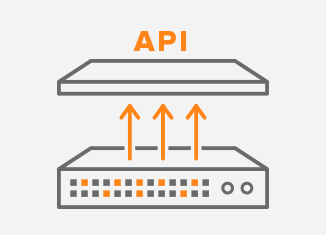Unlocking the Potential of White Box Network Switches and Solutions

In today’s rapidly evolving digital landscape, the demand for high-performance, scalable, and cost-effective networking solutions has never been greater. To meet these demands, organizations are increasingly turning to white box network switches and solutions. These versatile and customizable networking components are disrupting the traditional networking market and providing businesses with a new level of flexibility and control over their network infrastructure. In this comprehensive guide, we will delve into the world of white box network switches and solutions, exploring their advantages, use cases, and the transformative impact they have on modern networking.
The Evolution of Networking
Traditional networking infrastructure typically relies on proprietary hardware and software solutions provided by established vendors. While these solutions have served businesses well for many years, they often come with high acquisition and maintenance costs, limited flexibility, and vendor lock-in. As organizations seek more agile and cost-efficient alternatives, white box network switches and solutions have emerged as a compelling choice.
The Advent of White Box Networking:
White box networking represents a paradigm shift in the networking industry. Instead of relying on closed, proprietary systems, white box networking leverages open hardware platforms with customizable software, enabling organizations to build networks tailored to their specific needs. This approach offers several key benefits:
Cost Savings: White box networking components are typically more affordable than their proprietary counterparts, helping organizations reduce their networking expenditures.
Vendor Neutrality: White box solutions allow businesses to select software and hardware independently, avoiding vendor lock-in and ensuring interoperability.
Customizability: Organizations can customize their network solutions to meet specific performance, security, and scalability requirements.
Scalability: White box solutions are highly scalable, making them suitable for both small and large networks.
Community Support: Many white box networking solutions are backed by vibrant open-source communities, providing continuous support and updates.
Understanding White Box Network Switches
At the heart of white box networking are white box network switches. These switches form the foundation of modern networks, connecting devices, servers, and data centers to ensure seamless communication and data transfer. White box network switches are characterized by their open architecture, allowing users to install and configure the software of their choice.
Key Features of White Box Network Switches:
Open Hardware: White box switches use off-the-shelf, commodity hardware components, making them cost-effective and readily available.
Customizable Operating System: Users can select and install the networking operating system (NOS) that best suits their requirements, enabling a high degree of flexibility.
High Performance: White box switches are designed to deliver high-speed data transfer and low-latency performance, ideal for modern applications and services.
Interoperability: White box switches are vendor-neutral, ensuring compatibility with a wide range of networking equipment.
Community and Vendor Support: Many white box switches enjoy support from open-source communities and vendors, ensuring a robust ecosystem.
The Advantages of White Box Networking
1. Cost Savings
One of the most significant advantages of white box networking is cost savings. By leveraging off-the-shelf hardware and open-source software, organizations can significantly reduce their networking expenses. This is particularly appealing for small to medium-sized businesses looking to deploy cost-effective yet powerful networking solutions.
2. Customization
White box networking offers unparalleled customization options. Organizations can tailor their network infrastructure to meet specific requirements, whether it’s optimizing performance, enhancing security, or ensuring scalability. This flexibility enables businesses to adapt to changing needs and technology trends seamlessly.
3. Vendor Neutrality
With white box solutions, organizations are no longer locked into a single vendor’s ecosystem. They can select the best hardware and software components from various sources, promoting interoperability and reducing the risk of vendor-specific limitations.
4. Scalability
White box networking solutions are highly scalable, making them suitable for businesses of all sizes. Whether you’re a startup with modest networking needs or an enterprise with extensive data center requirements, white box solutions can grow with your organization.
5. Community and Vendor Support
White box networking benefits from strong community and vendor support. Open-source communities actively develop and maintain software, ensuring that networking operating systems receive regular updates, security patches, and feature enhancements. Vendors also offer support services for organizations that require additional assistance.
Use Cases for White Box Networking
White box networking is finding applications across various industries and use cases. Let’s explore some of the key areas where white box solutions are making a significant impact:
1. Data Centers
Data centers demand high-performance networking solutions to handle the massive volumes of data processed daily. White box switches provide the flexibility and scalability required to build robust and efficient data center networks. Their customizability allows data center operators to optimize network configurations for specific workloads, ensuring optimal performance and resource utilization.
2. Cloud Services
Cloud service providers rely on white box networking to build scalable and cost-effective cloud infrastructures. White box switches enable cloud providers to deliver high-speed, low-latency connectivity to their customers while minimizing operational costs. Customized networking solutions can be tailored to the unique needs of individual cloud services and applications.
3. Telecommunications
Telecommunications companies are embracing white box networking to enhance their network infrastructure. White box switches can be deployed at the core, edge, and access layers of telecommunications networks, providing the flexibility to adapt to changing subscriber demands. This approach is essential for supporting technologies like 5G and ensuring high-quality connectivity.
4. Enterprise Networking
Enterprises are adopting white box solutions to create agile and cost-effective networking environments. Whether it’s for campus networks, branch offices, or retail locations, white box switches offer the flexibility to design networks that meet specific business needs. Additionally, vendor-neutral solutions simplify network management and reduce operational complexities.
5. Service Providers
Service providers, such as internet service providers (ISPs) and managed service providers (MSPs), benefit from white box networking’s scalability and cost-efficiency. These providers can expand their services and improve customer experiences by deploying white box solutions that can handle increased traffic and support new services like IPTV and IoT connectivity.
Challenges and Considerations
While white box networking offers numerous advantages, organizations should be aware of potential challenges and considerations:
1. Expertise Required
Deploying and managing white box solutions may require a certain level of networking expertise. Organizations should ensure they have the necessary skills or consider partnering with experts to implement and maintain their white box networks effectively.
2. Compatibility Testing
Integrating different hardware and software components in a white box network requires thorough compatibility testing to ensure seamless operation. Proper testing and validation are essential to avoid compatibility issues that could disrupt network functionality.
3. Support and Maintenance
While white box networking benefits from community and vendor support, organizations should consider their support and maintenance requirements. Evaluate the availability of support options and service-level agreements (SLAs) to ensure timely assistance in case of issues.
The Future of White Box Networking
As the networking landscape continues to evolve, white box networking is poised to play an increasingly significant role. Its ability to provide cost-effective, flexible, and customizable solutions aligns with the demands of modern organizations. As technology advances, we can expect even more innovative developments in white box network switches and solutions, further expanding their reach and capabilities.
In conclusion, white box network switches and solutions are reshaping the networking industry by offering a compelling alternative to traditional proprietary solutions. Organizations that embrace white box networking stand to benefit from cost savings, customization options, and the ability to build networks tailored to their specific needs. With the continuous support of open-source communities and vendors, the future of white box networking looks promising, driving innovation and efficiency in networking infrastructure.




